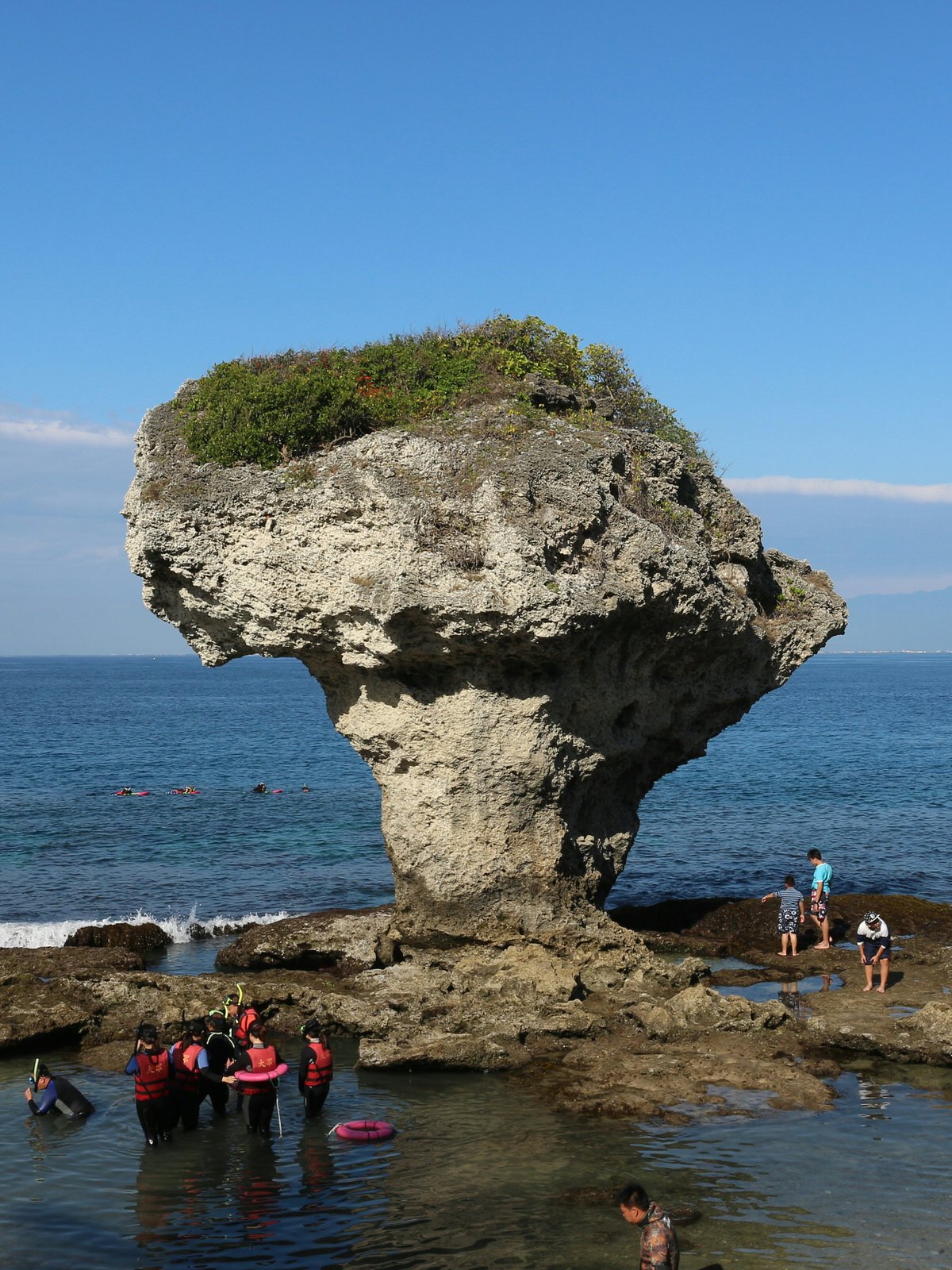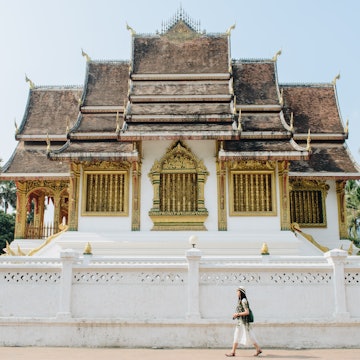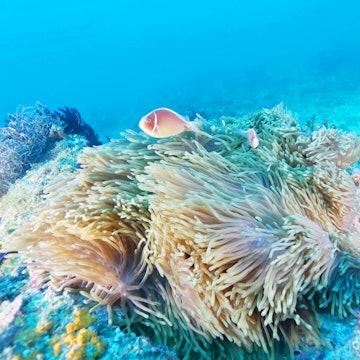

The Eight Generals, or Ba Jia Jiang, is a folk festival marking godly generals exorcising evil spirits for the emperor © twospeeds / Shutterstock
Tropical southern Taiwan is a land of turquoise waters and rocky coasts, night markets and beach bars, succulent seafood and fresh produce. One of southeast Asia's unsung beach destinations, in-the-know regional travellers have been quietly rocking up here to relax in chilled-out coastal towns and explore tropical inland parks.
Kaohsiung, Taiwan’s second largest city, is blossoming out of its industrial past into a cultural metropolis. Tainan, which has the highest concentration of heritage sites in Taiwan, is striving to make its temples and history more accessible to international travellers. And Pingtung County is fast coming into its own as a place of great natural beauty and quirky festivals.

In 2018 – the Year of the Dog – the cacophony of folk rituals in reaches a feverish pitch as many triennial festivals take place. Added to this are the perennial sounds of waves splashing and outdoor concerts, not to mention the contagious music of millions munching away at all hours.
Worshiping the plague gods
Every three years, coinciding with the Chinese zodiac years of the Ox, Dragon, Sheep, and Dog – 2018 is the latter – folk and Taoist festivals reach a climax in southern Taiwan. In these magical years, elaborate rites and lively parades take place that temples spend months, even years, preparing for. Many of them are related to plague-god worship, which still thrives here. In the past, flooding was a common occurrence, hence illness and pestilence were real and grave concerns. Although the healthcare and hygiene standards in Taiwan are worlds away now, people still pray to the plague gods for overall protection and good luck.

The spectacular Boat Burning Festival, for instance, is celebrated along the southern and southwestern coast, and on Little Liuchiu Island near Pingtung and Qijin, close to Kaohsiung. This 1000-year practice dates to the Song dynasty and came to Taiwan with migrants from Fujian. The grandest of these festivals is the Burning of the Wang Yeh Boats in autumn in the port town of Donggang. The eight-day proceedings begin on 28 October, 2018 and include rites to invite the gods, offering them feasts and parading them around town to collect plague demons, which are lured onto a boat. In the grand finale, the vessel, loaded with effigies and supplies fit for a journey, is burnt on the beach.
Year of colourful rites
These third years are referred to as ‘ritual years’, though ritual years happen at longer intervals, too. The three-year gap is believed to be related to China’s imperial exam system, which took place every triennium. According to custom, the hometown temple of a successful exam candidate would raise a flag with his name (only men could take the imperial examinations) to announce the honour, followed by celebrations.

A ritual year buzzes with pilgrimages and large-scale temple events involving a host of deities, notably the plague gods and Mazu, Taiwan’s patron goddess. Activities may feature reenactments of ancient battle arrays, ceremonial song and dance, acts by spirit mediums, and of course, firecrackers and fireworks. In such years, many Taoist temples also perform their own versions of sacrificial plague-boat rites, which may or may not involve boat immolation.
Most of these festivities take place in Tainan, Taiwan’s oldest city and its centre of plague-god worship. Tainan was the first port of call for seafarers and immigrants from Fujian from the 17th century. Hence it was here that many folk practices now inscribed on Taiwan’s heritage list first took root.
Southern Taiwan's warm and welcoming weather
The Tropic of Cancer slices across Taiwan north of Tainan, planting the southern part of the island firmly in the tropical climate zone. An average temperature of 24°C and little seasonal fluctuation mean it's possible to enjoy the outdoors just about all year round here.

Aiding in outdoor pursuits is the fact that the southern tip of Taiwan is protected as a national park: Kenting National Park. In January, when the average temperature is 21°C, you can hike the trails along the coastline, head into the low mountains, where wild macaques and deer roam, or cycle or scooter up to leafy terraces for views of turquoise waters crashing on curious rocks.
When the mercury soars past the 30°C mark in summer, it’s time to hit the waves. The surfing, snorkelling and diving here are all excellent, and Kenting's quaint resort villages make for chilled-out swimming and sunset barbecues. In April, Spring Scream arrives kicking. This raucous, multi-stage outdoor music fest sees fans from all over Asia camping out in the park. It’s one of the south’s two big music festivals, the other being Megaport, known for its passionate and earthy southern Taiwanese vibe. Megaport happens in March, next to Kaohsiung’s magnificent harbour.

Adventures on a coral island
On Little Liuchiu Island, a coral island just off the coast of Donggang, the outdoors comes with island life and folk culture. Attractive beaches and average summer and winter temperatures of 28°C and 17°C respectively mean you can scuba dive and snorkel here anytime. The island does not stint on marine life – divers report seeing green sea turtles and tropical fish, while starfish, sea urchins and other tidal-zone denizens are easily spotted. The island is generous with breezes too – sailing and windsurfing are very popular. When out of water, it’s best to explore the island on a scooter or bicycle, stopping for limestone caves, unusual rock formations like Vase Rock, and skewers of the most delicious seafood treats. Sanlong Temple, the island’s religious heart, is a major site for plague-god worship in the south.

A fruity feast
Thanks to its location and special topography, Taiwan is a haven for fruits of various climates. Some of the sweetest and juiciest selections grow in tropical southern Taiwan, where they’re most abundant and, therefore, cheapest. Depending on the time of year, pineapples, mangoes, papayas, wax apples, and dragon fruits burst in colours out of fruit stalls. Pickled pineapple is a common ingredient of Taiwanese chicken soup. Fresh loaves of bread are studded with dried guava or longan dipped in local liquor. And gourmet restaurants innovate sauces with sweetsops (sugar apples) for high-end ‘Taiwan-inspired’ cuisine.
That’s not all. In the hands of night market vendors, avocado is often whipped into a drink with milk and crème caramel – a refreshing postscript to grilled seafood and greasy treats on a balmy night. Kenting's Night Market – one of the best in Taiwan – is a great place to start.
Taiwanese artisan chocolate
Some of the island's delicious fruits also make their way into chocolate. Taiwan is a rising chocolate destination, and the south is where the majority of the island’s cacao is grown.

The region offers abundant opportunities to sample top-notch tree-to-bar chocolate, including at the source – the sun-blessed farms of Pingtung County. Apart from getting a fix of antioxidant-rich truffles and chocolate desserts, farms like Cocosun and Fu Wan offer tours on which you learn about the growth and harvest of cacao or attend a chocolate-crafting workshop (with lots of samples to bring home).














